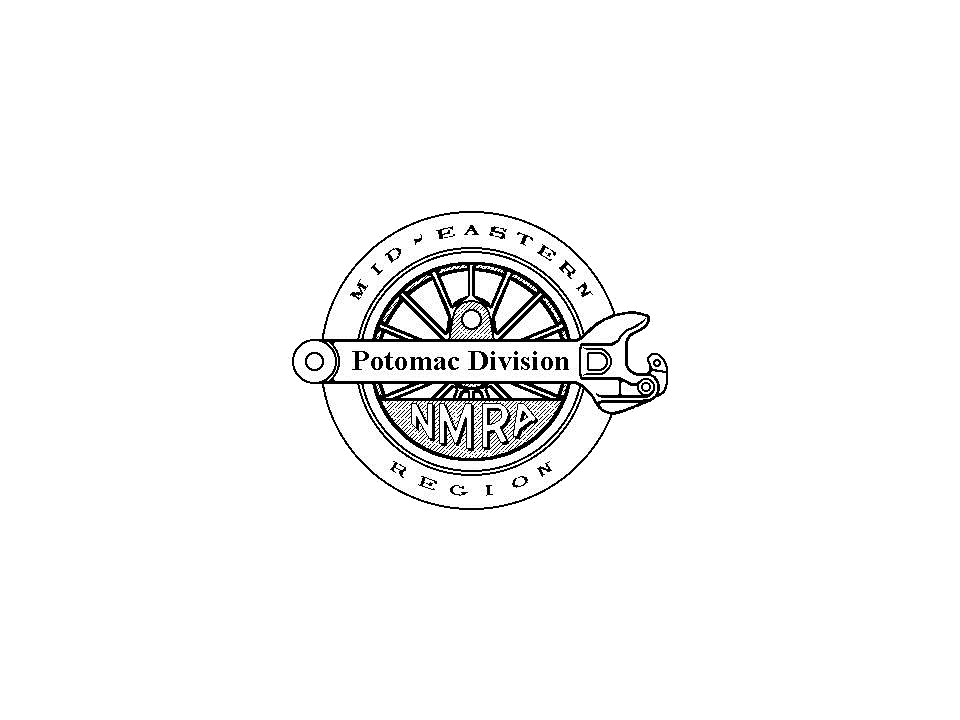A
BEAUTIFUL EXAMPLE OF A POPULAR AREA TO MODEL
It may seem
unusual for a New Englander like myself to have an interest in the
C&O, but considering where I was in the early 1960s makes it
more understandable. I was in downtown Richmond at the time without
transportation, and if I wanted to see trains at all, the closest site
was Main Street Station, used by the C&O. At that time, the
C&O was big in Richmond. The company’s headquarters was there,
and the main line from Newport News split into the mountain
sub-division (Charlottesville – Clifton Forge) and
the
James River
sub-division (Lynchburg - Clifton Forge) in the middle of a long
viaduct paralleling the river south of downtown. The famous three level
crossing (C&O, SAL, and SRR) is also
nearby.
Bryan’s
circa 1952 C&O Allegheny Subdivision is a large point to point
shelf style layout that runs around the walls of three rooms. It starts
at Clifton Forge and extends west to Hinton, West Virginia, giving him
the opportunity to run those famous H-8 2-6-6-6 articulated locomotives
that had long been replaced by multiple unit EMD GP’s by the time I
arrived on the scene. It also includes the Greenbriar Sub-division, a
line from Whitcomb, north of Ronceverte, West Virginia on the
Greenbriar River, to Durbin and Cass. His main line is a double tracked
145’ run with Shinohara code 83 track and turnouts and a minimum radius
of 32”. The turnouts are powered with Tortoise motors and controlled
via Loco Net on the main line and by rotary switches in the local
yards. Long term plans are for the railroad to be centrally dispatched
using CTC run by a computer with JMRI. The railroad owned Greenbriar
Hotel at White Sulphur Springs, West Virginia, just past the state
line, is on the main line; an extension to the large Westvaco Paper
Mill complex at Covington, Virginia, and an additional line from
Covington to provide mixed-train service to the Homestead at Hot
Springs, Virginia, the other large railroad owned resort hotel in the
area, are also in the works.
You
enter into a long room, one side of which is a long yard/staging area
representing Clifton Forge and Covington. One of his DCC/sound equipped
H-8’s was chugging up and down moving cars around. If you’re modeling
the C&O with their long coal trains you need those long staging
tracks to set them up. From there it sweeps around a broad curve into
the next room, expands to four tracks (two main, two passing) and
enters Allegheny, the center point of the railroad. The model
of the station is there along with a tower, a large turntable (for
those H-8’s), and photographs of that section on the wall to document
the accuracy of the scene, but little else at this point. The starkness
of the location would be typical of the C&O back in the steam
days; not much grew in places like that (fortunately, there was no EPA
to take soil samples either). There was a pair of E-8’s on a 10 car
streamlined C&O train with two Pennsy cars at the rear parked
there facing west, no doubt waiting for orders to move on down the
line. The railroad continues around the other side of the room where a
Kanawah, C&O’s designation for the 2-8-4, was doing some
switching of its own at what will eventually be White Sulphur Springs
and the Greenbriar Hotel. These versatile locomotives were used with
equal success on fast freights and first class passenger trains, the
steam version of the GP 7, and served the railroad well in that
capacity until they were eventually displaced by the aforementioned
diesels. The railroad eventually curves around into Ronceverte. There
is a smaller turntable there and more structures, both railroad and
town related. From there it travels around to the third room
(Hinton and the end of the sub-division) with another large turntable
and more long staging tracks.
In
most people’s minds the Appalachians of western Virginia and West
Virginia are noted for two things: coal and trees. Fortunately, from an
aesthetic point of view the coal is under the trees. The railroad areas
themselves have little growth as previously noted, but the surrounding
mountains in Bryan’s layout are set to blossom forth with vegetation
utilizing pre-fitted sections with large numbers of trees on them. Over
the past three years, visits to other Appalachian themed home layouts
have convinced me that you can’t have enough trees when you’re modeling
that region, and Bryan is following that pattern as well. If the
finished product with all the scenery in place looks anything like the
beautifully laid and ballasted track work that he has already done, his
layout will truly be a showpiece of model railroad design and
construction. And to top it all off, Bryan, a retired Navy musician,
has even written a song about it, but at the top of the song sheet it
says something about “intended for professional singers only,” probably
to dissuade people like me from trying to perform it.
Bob
Rosenberg

